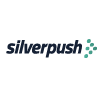5 Innovative Advertising Strategies to Kickstart Today
In today’s hyper-competitive market, brands are always looking out for new & creative ways to advertise their products. Innovative strategies continually emerge to capture audience attention & drive engagement. In fact, the largest market is TV & Video Advertising, with a market volume of $143.80bn in 2024. When compared globally, the United States will account for the most ad spending in 2024, amounting to $422.30bn.
Here are five best advertising strategies that companies can start planning today to elevate their advertising game:
1. Contextual Advertising
Contextual advertising involves providing ads that are relevant to the context of user search or browsing behavior. This strategy ensures that ads are aligned with the users’ current interests or online activities. By serving ads that complement surrounding content, advertisers can enhance their targeting capabilities and deliver more relevant ads to their audience. Leveraging artificial intelligence and machine learning algorithms, businesses can analyze user data in real time to identify the most opportune moments to display ads.
As behavioral targeting declines, contextual targeting solutions are emerging as the preferred method to reach consumers in a cookieless environment. Predictions suggest that between 2022 and 2030, global spending on contextual advertising will increase by 13.8% annually.
2. Digital Advertising
Digital advertising encompasses a wide range of channels, including social media ads, display advertising, video ads, and search engine marketing (SEM). Each channel offers unique opportunities for reaching and engaging with target audiences. For instance, social media platforms like Facebook, Instagram, and LinkedIn provide highly targeted advertising options based on user demographics, interests, and behaviors.
Search engine marketing (SEM), including pay-per-click (PPC) advertising, allows businesses to bid on keywords related to their products or services, ensuring their ads appear at the top of search engine results pages (SERPs) when users search for relevant terms. By strategically allocating budgets and optimizing ad campaigns, companies can maximize their visibility and drive conversions through digital advertising channels.
As per Wordstream, the global digital advertising market for 2024 is estimated at $667 billion and is projected to reach $786.2 billion by 2026. Within the Advertising market, 82.53% of total ad spending is expected to come from digital advertising in 2029.
3. Interactive Advertising
Interactive Advertising has proven to be highly engaging and effective in capturing audience attention. From interactive quizzes and polls to immersive experiences like augmented reality (AR) and virtual reality (VR) applications, businesses can create memorable brand experiences that foster deeper connections with consumers. By incorporating gamification elements, companies can incentivize user participation and drive increased brand interaction and loyalty.
4. Personalized and Dynamic Advertising
Personalization is key to capturing the attention of today’s consumers who are inundated with marketing messages. Utilizing data analytics and automation tools, businesses can create personalized remarketing campaigns that tailor ad content based on a user’s previous interactions with their brand. Dynamic remarketing takes personalization a step further by dynamically adjusting ad content based on real-time user behavior, such as products viewed or items left in a shopping cart.
As per Emarketer, global advertising spending is expected to surpass $800 billion in 2024, with digital advertising accounting for over 70% of total advertising expenditure.
5. Influencer Advertising Collaborations
Influencer marketing continues to be a powerful tool for reaching target audiences authentically. Rather than solely focusing on macro-influencers with millions of followers, companies can benefit from collaborating with niche micro-influencers who have smaller but highly engaged followings within specific communities or industries. Micro-influencers often have a more genuine connection with their audience, leading to higher levels of trust and conversion rates.
Conclusion
By planning and implementing these effective advertising strategies, you can reach your target audience effectively, build brand loyalty, and achieve your marketing goals. Remember, the advertising industry is constantly evolving. Stay curious, experiment with new tactics, and measure your results to refine your approach and stay ahead of the curve.
